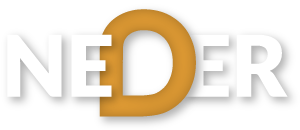Table of Contents
- Introduction
- Importance of Content Planning
- Components of an Editorial Calendar
- Steps to Create an Editorial Calendar
- Best Practices for Content Planning
- Tools and Resources
- FAQ
- Conclusion
Introduction
Content planning is an essential aspect of any successful marketing strategy. It involves organizing and scheduling various content assets to achieve maximum impact. By mastering content planning, marketers can streamline their processes, boost engagement, and enhance customer relations. In this post, we will explore the art of creating a successful editorial calendar, which serves as a roadmap for effective content distribution.
Importance of Content Planning
Why is content planning so crucial? Well, it ensures that your marketing efforts are aligned with your business goals. Additionally, it helps maintain consistency, which is vital for brand recognition. Moreover, a well-structured content plan enables marketers to address customer needs effectively, fostering stronger relationships with the audience.
When content is planned ahead of time, it not only improves content quality but also enhances productivity. Thus, having a content strategy that incorporates an editorial calendar significantly boosts your marketing success.
Components of an Editorial Calendar
Creating an editorial calendar requires considering several key components:
Content Ideas
Begin by brainstorming content ideas that align with your marketing objectives. This includes blog posts, social media updates, videos, and more. Ensuring that your ideas are relevant will keep your audience engaged and coming back for more.
Deadlines
Establish clear deadlines for each piece of content. Setting timelines helps prioritize tasks and ensures consistent output. Similarly, deadlines keep the team accountable and aligned.
Publishing Platforms
Identify where your content will be published. Different platforms may require different formats or styles. By knowing your platforms in advance, you can tailor your content accordingly.
Target Audience
Understanding your target audience is crucial. Each piece of content should cater to the preferences and interests of the audience you aim to reach. This customization increases engagement and effectiveness.
Performance Metrics
Lastly, determine how you will measure the success of your content. Whether through web traffic, social media engagement, or conversion rates, identifying these metrics early allows for better analysis and adjustments.
Steps to Create an Editorial Calendar
Now that we understand the importance and components of an editorial calendar, let’s discuss the steps involved in creating one:
1. Set Your Goals
Begin with defining clear and measurable goals for your content strategy. Are you looking to increase brand awareness, generate leads, or build customer loyalty? By setting specific goals, you can align your content effectively.
2. Choose a Calendar Tool
Select a tool that suits your organization’s needs. This could range from simple spreadsheets to specialized editorial calendar software. The right tool will facilitate collaboration and updates.
3. Brainstorm Content Ideas
Gather your team for a brainstorming session. Encourage creativity and gather diverse ideas that resonate with your audience. As suggested, Content Planning: Creating a Successful Editorial Calendar can serve as a guide to generating and organizing these ideas.
4. Map Out Your Content
Arrange your content ideas in the calendar. Make sure to include key details like content titles, formats, publication dates, and the responsible team members. This map will serve as your content roadmap.
5. Review and Adjust
Periodically review your editorial calendar. Assess what is working and what is not. Being flexible and making adjustments is essential for success.
Best Practices for Content Planning
As you venture into content planning, consider implementing these best practices:
Utilize Customer Feedback
Engaging with your audience and paying attention to their feedback can significantly improve your content alignment with their needs. Regularly gather input to refine your strategies.
Stay Updated with Trends
The digital landscape is constantly evolving. Keeping up with industry trends helps ensure that your content remains relevant. Subscribe to industry newsletters or join professional associations to stay informed.
Collaboration is Key
Involve different teams in the content planning process. Collaboration fosters diverse perspectives and innovations, making content more holistic.
Use Analytics
Leverage analytics tools to measure content performance. Data-driven decisions help pinpoint successful content strategies. By continuously analyzing performance, you can cultivate a more effective editorial calendar.
Tools and Resources
To optimize your content planning efforts, consider using various tools and platforms:
- Mastering Content Planning for Marketers
- Unlock Your Editorial Calendar Success
- Effective Strategies for Content Coordination
- All You Need to Know About Content Scheduling
- Crafting the Perfect Editorial Workflow
- Boost Engagement with Strategic Planning
- Streamlining Marketing through Content Management
- Achieving Marketing Goals with Editorial Calendars
- The Art of Organizing Content for Maximum Impact
- Elevate Your Marketing with Content Planning
- All You Need to Know About Content Scheduling
- Mastering the Art of Customer Loyalty
- Understanding Customer Needs to Drive Success
- Understanding Customer Needs to Drive Success
- Transform Your Client Interactions Today
FAQ
What is an editorial calendar?
An editorial calendar is a tool used by content creators to schedule and manage their content publishing and engagement activities. It helps in organizing content themes, topics, deadlines, and various platform channels.
Why is content planning necessary?
Content planning ensures consistency and alignment with marketing goals. It enhances workflow efficiency and improves audience engagement, making it essential for any successful content strategy.
How often should I review my editorial calendar?
Regular reviews are recommended, ideally on a monthly basis. Frequent adjustments based on performance metrics and audience feedback are crucial for ongoing success.
Conclusion
Mastering content planning can significantly transform your marketing approach. By implementing an organized editorial calendar and focusing on strategic content creation, marketers can enhance engagement, improve processes, and ultimately drive success. With the combination of creativity, analytics, and a structured plan, your marketing efforts will not only meet but exceed expectations.


